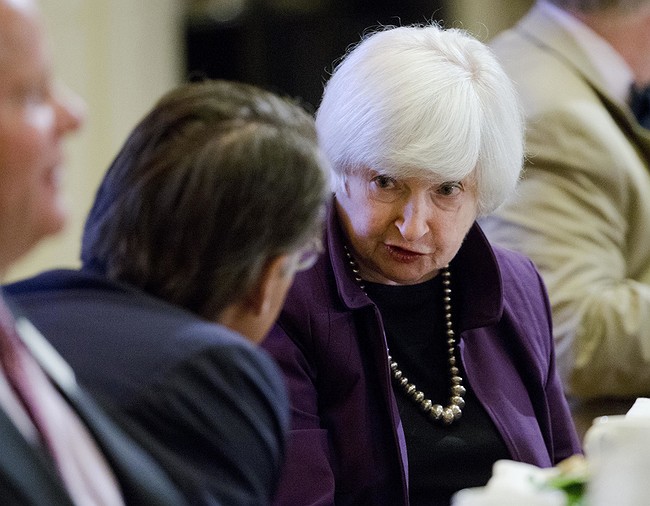-
Tips for becoming a good boxer - November 6, 2020
-
7 expert tips for making your hens night a memorable one - November 6, 2020
-
5 reasons to host your Christmas party on a cruise boat - November 6, 2020
-
What to do when you’re charged with a crime - November 6, 2020
-
Should you get one or multiple dogs? Here’s all you need to know - November 3, 2020
-
A Guide: How to Build Your Very Own Magic Mirror - February 14, 2019
-
Our Top Inspirational Baseball Stars - November 24, 2018
-
Five Tech Tools That Will Help You Turn Your Blog into a Business - November 24, 2018
-
How to Indulge on Vacation without Expanding Your Waist - November 9, 2018
-
5 Strategies for Businesses to Appeal to Today’s Increasingly Mobile-Crazed Customers - November 9, 2018
Fed Keeps Rates Unchanged, Signals Lower Rate Path Going Forward
Federal Reserve Chair Janet Yellen left US interest rates unchanged on Wednesday, citing slow jobs gains, tepid growth and low inflation – and an impending vote in Britain on whether to quit the European Union. Esther George, head of the Federal Reserve Bank of Kansas City, who had dissented in earlier meetings because she favored faster rate increases, backed the June decision to keep rates unchanged. The possible “Brexit” is a “decision that could have consequences for economic and financial conditions in global financial markets”, Yellen said.
Advertisement
On the other hand, former Fed Governor Robert Heller said in case the Federal Reserve does not begin increasing the key interest rates it could the lead to the next US recession.
The central bank’s decision to stick with its 2016 rate path, however, appeared shakier, with six of its 17 policymakers projecting just one increase this year.
A sharp slowdown in United States hiring in May had fuelled doubts about the strength of the labour market going into the Fed’s two-day policy meeting.
Some economists say the Fed could be ready to raise rates in July, assuming that the dismal May employment report is followed by a much stronger June number and investors don’t panic after the vote in Britain.
The FOMC stuck to its forecast that inflation will rise to its target of 2.0% “over the medium term” but that it continued to watch prices. Yellen did not rule out the possibility of two rate hikes later this year, even as the economic forecasts for the coming years were lowered. “Central banks have been throwing a kitchen sink at the economy over the past seven years and now have no way to combat the weakness”, said Matthew Tuttle, chief investment officer of Tuttle Tactical Management in CT. Investors are placing a 55% chance of a rate hike in December – meaning they are expecting only one this year.
Brian Jacobsen of Wells Fargo Funds Management said: “It’s as dovish as the Fed can get without actually cutting rates”.
She cited the surprising slowdown in job growth last month, adding, “We need to assure ourselves that the underlying momentum in the economy has not diminished”.
Bullard noted that low economic growth and a Fed funds rate of just 63 basis points is likely to remain through to 2018.
April 27, 2016: “We’ve chose to maintain the target range for the federal funds rate at 1/4 to 1/2 percent….Growth in household spending has moderated, although households’ real income has risen at a solid rate and consumer sentiment remains high”. Yet it signaled its concern about the uncertainty of job growth and global economic developments. “If it does so, it could have consequences, in turn, for the USA economic outlook”, Yellen said.
The decision to keep rates steady this time had no dissenting votes, unlike in prior FOMC meetings.
Advertisement
As well, “we have digitization that is hurting the job market”.





























